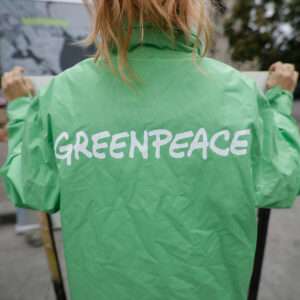A new report by the environmental organization Greenpeace reveals that only 5 percent of plastic waste in the United States was recycled last year, and it concludes that companies should phase out all single-use plastic items and move to packaging-free approaches. The group has been at the forefront of calls to ban single-use plastic items and packaging in the country.
A misconception advanced by the report is that most plastic in the United States is not just not recycled; it isn’t recyclable at all. That is inaccurate. In fact, all polymers can be 100 percent recycled, and the Environmental Protection Agency aims to increase the recycling rate to 50 percent by 2030.
One of the reasons for the low recycling rate is that most recycling is still rudimentary, using grinding, washing, separating and compounding polymers, leaving them intact. Advanced recycling, however, uses chemical processes to dissolve plastic items into their original components. This not only allows recyclers to gain plastic that is indistinguishable from new plastic components but it could also yield $970 million in potential recycling revenues, based on a 2021 report. The availability of new technologies using cameras and sensors, and even artificial intelligence, will further improve how we recycle.
Advances are already being made in the availability of recycling for consumers. In fact, 90 percent of Americans living in cities with more than 125,000 already have access to recycling facilities for single-use plastic items.
Another intellectual shortcut used in the communication surrounding this report is how the disposal of used plastics is listed. All too often, we read “almost 95 percent (of plastics) ended up in landfills, oceans.” This is a convenient but wildly disingenuous way of framing the issue of plastic waste, primarily because naming landfill incineration and pollution combined ignores that about 11 percent of ocean plastic pollution results from microplastics and 75 percent to 86 percent of the plastic in the Pacific Ocean garbage patch comes directly from offshore fishing, not consumer products. While that number is still too high, how non-recycled plastic is portrayed misleads readers into believing that all of it is dumped straight into the ocean.
The dumping of plastics directly into the environment needs to be punished to the full extent of the law, and actions that lead to exporting plastic to foreign locations that do the same should structurally be regarded as aiding pollution. Companies that participate in shipping plastic waste abroad need to be transparent about the information they have about disposal techniques upon arrival of the trash at its destination.
Meanwhile, those who seek to ban plastic altogether should analyze the alternatives. In the case of single-use plastic bags, all substitute materials (including paper and cotton) do not even manage to break even on environmental impact compared to the old-school plastic shopping bag. That is not only because consumers reuse plastic bags as complimentary waste bags — thus using fewer bin liners — but also because the reuse rate of alternative bags doesn’t live up to the necessary standard.
According to Denmark’s environment ministry, paper bags would each need to be reused 43 times to bring their per-use impact on the environment down to the per-use impact of single-use plastic bags. For most people, reusing a paper bag 43 times is virtually impossible. Even worse, when the alternative option is a cotton bag, that number skyrockets to 7,100 uses. A consumer substituting a cotton bag for plastic would need 136 years of weekly grocery store trips to be as environmentally friendly as single-use plastic is.
Let’s also consider the practical uses of plastic packaging, or rather the reason it was implemented in the first place. Using practical examples, bananas have doubled their shelf life through plastic packaging, while the plastic film surrounding cucumbers almost triples their shelf life. The necessity of this packaging is selective. Not all cucumbers and bananas need to be wrapped because certain volumes will be sold and consumed before they reach their natural expiration date.
Large cities face distribution challenges that make plastic packaging important. In fact, plastic packaging comes at a cost to retailers and consumers alike and is thus only used to protect availability and affordability and to avoid food waste. The environmental impact of food production far outweighs the effects of plastic packaging.
Nobody is arguing for a status quo. The dumping of plastics in rivers and oceans needs to be made a relic of the past sooner rather than later. At the same time, recycling needs to be upgraded and requires cooperation on the local level to make more facilities available to consumers. Greenpeace’s arguments for outright bans fail to address the complexity of the needs of consumers.


